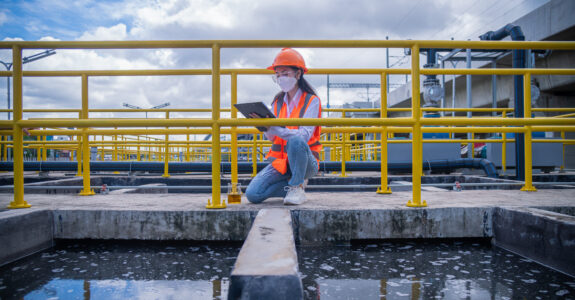
Is EPA Method 1633 Finally on the Horizon for Clean Water Act Promulgation?
August 8, 2024
By: David R. Blye, CEAC
The race to regulate PFAS has been swift, but the journey to establish a reliable analytical method has been anything but. Enter EPA Method 1633, a potential game-changer for non-drinking water matrices. Our recent discussions with a senior official in the US EPA Office of Water responsible for Clean Water Act (CWA) methods suggests it is questionable if Method 1633 will even be proposed for promulgation before the end of 2024.
A Little History on Method 1633
US EPA Method 1633 has gone through several revisions before reaching its “final” status. The method was first released in draft form in August 2021. The second draft was released in June 2022 that incorporated input from the scientific community and provided a multi-laboratory validation study. A team of Chemists from Environmental Standards, Inc. (a Montrose company) provided extensive comments to the US EPA Office of Water on both the first and second drafts of the method.
A third draft was published in early 2023 to address editorial changes and minor protocol changes, and a fourth draft incorporating further refinements was issued later in 2023. US EPA published the “final” revision in January 2024. But is a method really final for use in CWA monitoring under the National Pollutant Discharge Elimination System (NPDES) if it has not been formally proposed for promulgation under 40 CFR Part 136? Lastly, in April 2024, US EPA published an Errata to the first “non-draft” of Method 1633 on the US EPA webpage for Method 1633. This Errata provided further “minor editorial errors in callouts to tables and other sections of the method.” US EPA further indicated that the method would not be revised to incorporate the changes in the errata until such time as the method was proposed for promulgation.
Method 1633 has been developed for over 3 years and is still not promulgated, but US EPA is certainly recommending its use:
“While the method is not nationally required for CWA compliance monitoring until the EPA has promulgated it through rulemaking, the EPA recommends it now for use in individual permits.”
Historically, analytical methods have not been used for NPDES monitoring without having gone through formal rulemaking as a Methods Update Rule (MUR) in 40 CFR Part 136. So, is Method 1633 really “final” or does US EPA just want us to think it is?
Promulgation in 2024 of Method 1633 – Maybe?
On the US EPA webpage for Method 1633, last revised April 18, 2024, it is indicated that “The EPA expects to propose Method 1633 at 40 CFR Part 136 in the coming months.” I recently contacted a senior official in the Office of Water on the CWA Methods Team and learned that a draft rulemaking to include Method 1633 is under review at the Office of Management and Budget (OMB) to determine compliance of the proposed rule with the National Technology Transfer and Advancement Act (NTTAA).
It is an election year. It is August and just a few short months away from the 2024 Presidential election. If OMB does not complete its review soon of the proposed MUR that includes Method 1633, it may be well into 2025 before it hits as a proposed rule (and subject to formal docket comments) in the Federal Register. Experience suggests that proposed rulemaking review by OMB slows down as presidential elections near, as controversial rules, like those concerning PFAS, are likely to get re-evaluated if the administration in the White House changes.
So, will EPA Method 1633 get proposed for promulgation in 2024? Maybe. Maybe not.
 David R. Blye, CEAC
David R. Blye, CEAC
Senior Principal Chemist, Environmental Standards
Mr. Blye has more than 40 years of diversified experience in the field of environmental chemistry; his experience includes field data collection and environmental sampling and the planning, development, and execution of field sampling and analytical projects. He specializes in the interpretation of organic and inorganic analysis data and the development of field procedures for the collection of representative groundwater, surface water, soil, air, and multi-media samples. He has generated site-specific sampling plans for more than 200 sites, including Quality Assurance Project Plans for more than 47 state or federally supervised CERCLA, RCRA, and DOD sites. Mr. Blye has extensive experience in US EPA organic and inorganic analytical methodology and analytical data validation. He has overseen the validation efforts of several hundred projects. Mr. Blye also has extensive experience in auditing laboratory facilities to evaluate compliance with analytical protocols and Quality Assurance Project Plans and to determine analytical capabilities. He has audited more than 400 laboratories, including laboratories in Canada, the United Kingdom, Europe, and Puerto Rico. He also has a strong environmental forensics background and specializes in the analytical chemistry of PFAS, PCBs and Dioxins/Furans.

